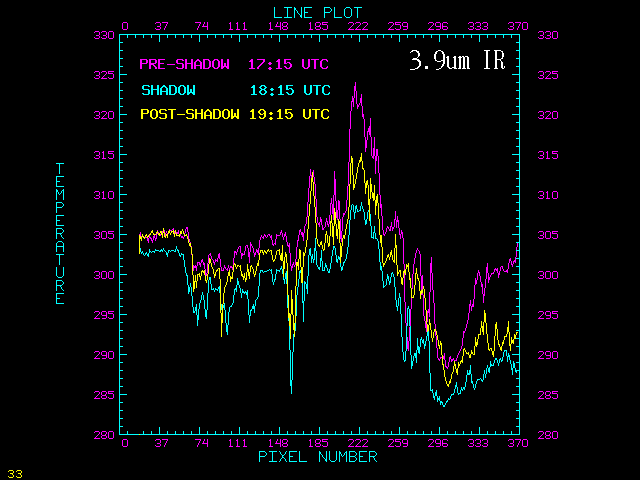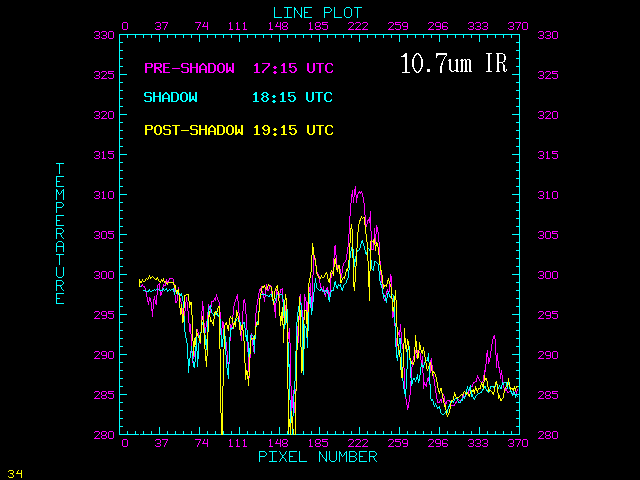26 February 1998 -- Solar Eclipse Shadow
The shadow from a solar eclipse moved northeastward across parts of South America on 26 February 1998. The GOES-8 images above show visible, 3.9 micron shortwave IR, and 10.7 micron longwave IR as the shadow crossed the coast of Venezuela around 18:15 UTC. A short loop of 1-km visible images is also available.
Note the diagonal yellow line on each of the images above; distance vs. brightness temperature plots along this line are shown below for both the 3.9 micron and 10.7 micron IR channels. These plots reveal several points about the brightness temperatures observed in this region where 90% of the sun was eclipsed:
- Warmer brightness temperatures are sensed by the 3.9 micron shortwave IR channel -- this is due to the 3.9 micron detector's sensitivity to reflected solar radiation as well as radiated thermal energy from the Earth's surface
- In the eclipse shadow, brightness temperatures cool by 2-4 K (up to 17 K) in the 3.9 micron channel, but generally cool less (1-2 K, but up to 7 K) in the 10.7 micron channel
- Brightness temperatures are warmer over land (the left side of the plots) compared to over the adjacent Caribbean Sea (the right side of the plots); the warm spike in the middle of each plot is the coastal mountain range, which heats up more due to less vegetation; the warm spike over the water on the 10.7 micron plot is an island in the Lesser Antilles chain (Isla La Tortuga); sun glint is contributing to the warmer offshore brightness temperatures on the 3.9 micron "pre-shadow" plot
Other solar eclipse shadow imagery:
Address any questions or comments to Scott.Bachmeier@ssec.wisc.edu or Tim.Schmit@ssec.wisc.edu
Back to the CIMSS GOES Gallery

